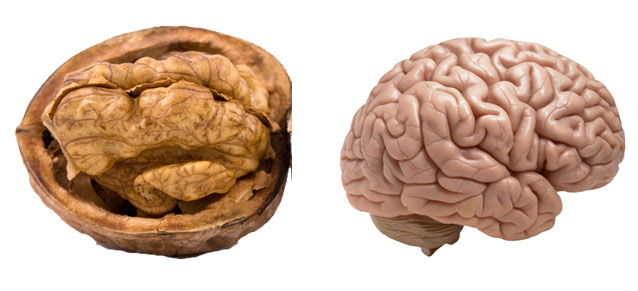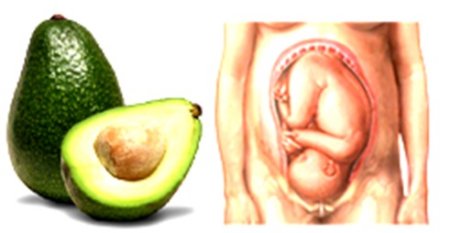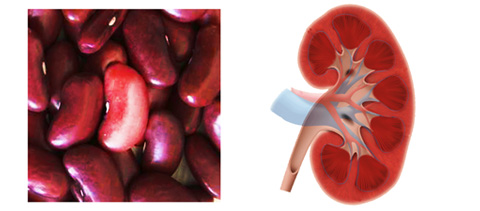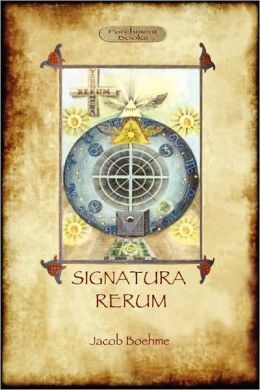 Have you ever noticed how some fruits and vegetables actually look like certain parts of your body? Though this may seem like a quirky coincidence between man and nature, you might find yourself amazed and beginning to wonder if this resemblance is actually a deliberate one, especially when you discover more about the Doctrine of Signatures.
Have you ever noticed how some fruits and vegetables actually look like certain parts of your body? Though this may seem like a quirky coincidence between man and nature, you might find yourself amazed and beginning to wonder if this resemblance is actually a deliberate one, especially when you discover more about the Doctrine of Signatures.
What is the Doctrine of Signatures, you might ask? Well, the truth is, you may actually already be familiar with what it is without having known its proper name beforehand. The Doctrine of Signatures is the belief that certain plants and herbs that look like a certain body part can be turned into medicine and treatments for whatever sicknesses that body part might experience.
This might easily sound like some wild or old superstition at first, but once you hear some of the resemblances that can be found throughout the Doctrine of Signatures, you might find yourself a bit more inclined to believe in this old philosophy.
Just some examples include: carrots, which are known for promoting good eye health, look like the irises of our eyes when you slice them crosswise.

The avocado takes 9 months to fully grow and ripen, much like the time it takes for a pregnancy to fully develop, and is good for the health and well-being of pregnant women; walnuts look like brains and, not surprisingly, are found to be very good at enhancing brain function.

Perhaps unsurprisingly, kidney beans, which resemble kidneys, are very good at keeping the kidney healthy and functioning well.

Some more specific and less obvious examples of the Doctrine of Signatures include the tomato which is red and, when sliced, reveals four distinct “chambers”, very much analogous to the organ that it is most helpful towards; the heart which is red and also has four chambers.

Another fruit that is good for your heart are grapes, which when they are still grouped in clusters look like a heart, not to mention that each individual grape looks like a blood cell. These are just a few examples of the numerous body parts and organs, which range from our lungs, to our bones, to our kidneys and to many more, that find an uncanny aesthetic and medicinal counterpart in naturally occurring vegetables.
Its Signature in History
The Doctrine of Signatures has a history and origin that is as vibrant, eccentric, and colorful as the many shapes, sizes, and hues of the planet’s plants and vegetables.
The earliest known recording of the Doctrine was made by the medicinal innovator and reformist Paracelsus during the late 15th century. Paracelsus, who is also known as one of the fathers of modern chemistry, emphasized the practice of observing nature and our natural surroundings in the practice of medicine, instead of relying on ancient, and possibly outdated, medicinal texts.
 However, it was not famously known as the “Doctrine of Signatures” until the early 16th century. Published works such as Jakob Bohme’s “Signatura Rerum” (which translates into “The Signature of Things”) and Willaim Coles’ “Adam in Eden” further postulated that the Doctrine of Signatures was not only a naturally occurring phenomenon orchestrated by Mother Earth, but, instead, a spiritual and divine occurrence made possible by God.
However, it was not famously known as the “Doctrine of Signatures” until the early 16th century. Published works such as Jakob Bohme’s “Signatura Rerum” (which translates into “The Signature of Things”) and Willaim Coles’ “Adam in Eden” further postulated that the Doctrine of Signatures was not only a naturally occurring phenomenon orchestrated by Mother Earth, but, instead, a spiritual and divine occurrence made possible by God.
They stated that, upon the creation of a certain thing, God would imbue in it a special purpose and use, which could be easily identified by its “signature.” Thus, the reason that that these signatures resemble the body part they can give medicinal aid to is because they were purposely and precisely made to look as such, to help man in its identification and application. In short, God provided visual cues to aid people in identifying plants that they need because these plants were specifically created for mankind’s benefit in the first place.
For example, there is a certain type of plant that aids in counteracting the venom of a snake bite. Called the snakeroot, it is easily identifiable and remembered by its signature – two white hooks that look like fangs. Even the colors and tastes of plants provide cues as to which body part they provide advantages to. Red, as tomatoes are, are good for the heart, as are plants that taste bitter. Black and salty benefits the lungs while yellow and sweet aids the spleen. The liver, on the other hand, thrives on green and sour fruits and vegetables.
The Doctrine of Signatures, however, was not only limited to how the plants looked or tasted, but also in the locations that they could be found in. As an example, the kidneys, which are known to act as filters and sorters of the liquid and solid nutrition in our body, have many signatures that can be found in environments that are both simultaneously wet and dry.
False Signatures?
Naturally, there are more than a few skeptics who find it difficult to believe in something as subjective and difficult to quantify as the Doctrine of Signatures as a dogma that can be accurately and reliably used for medicinal and scientific purposes. They argue that these resemblances are merely coincidence and that, perhaps, people see what they want to see. It is further emphasized that our knowledge of the medicinal aspects of certain plants biases our perspective of them. A case in point – we know that eating carrots can help with our eyesight, thus we associate the body part with the vegetable, which makes it easier for us to form connections between the body part and the plant.
Whether or not the Doctrine of Signatures is always and completely 100% accurate and reliable for every individual case, is something we can never be completely sure of. But what cannot be denied, though, is that of the Doctrine of Signatures that we already know for sure (such as the examples of carrots, walnuts, and avocado), the medical benefits they provide to their respective body part or organ are real and cannot be ignored or brushed off as nonsense.
Philosophical, Rational, Medicinal
All in all, the complicated and storied history of the Doctrine of Signatures and its uses can serve to teach us some very simple truths and lessons about life, our health, and nature. The first of these unquestionable truths is that we are what we eat (almost literally).
By consuming fruits and vegetables that are healthy for us and help strengthen our body, we will be able to protect our body, its many organs, and ourselves from danger and disease. Some people might argue that it is only a coincidence that stalks of celery, which look like our bones, are very good at keeping our bones strong. The plain and simple fact remains, however, that eating celery is very good for us and that we should continue doing so.
Another, and perhaps more pertinent and important fact that the Doctrine of Signatures reveals to us, is that when we experience physical ailments and sicknesses, we can always look to nature to help resolve them. The natural world is a place of many gifts and boons to our lives, some of which we have not yet even discovered.
We should not be so quick to assume that mechanically manufactured and non-organic products are automatically superior to the things that occur naturally and organically. Instead of spending money and other resources on buying products that claim to help with your sore bones or dry hair, you could simply consult the Doctrine of Signatures, look into the naturally occurring alternatives and have great results! By turning to nature for guidance, we expose ourselves to the wisdom of thousands of years, developed and evolved by the planet, and to be used by us, for our health. We only need to choose to do so.
The Doctrine of Signatures isn’t trying to completely change the way you structure your health and lifestyle, nor does it claim to be a replacement for medicines. Familiarity with the Doctrine of Signatures, however, serves as very simple and useful reminders in your daily life about which foods or plant products can aid you with your particular health concerns. For example, the next time you eat a tomato or any dish with tomato sauce, the mere appearance of the tomato effortlessly reminds you of its role in keeping your heart healthy, which will in turn remind you to be more observant and vigilant about your diet and cholesterol intake.
By allowing the Doctrine of Signatures to imprint its signature in small but concrete ways in our everyday life, we are able to greatly improve and increase our health and longevity.
If you love this article, you’ll love what I have created for you on how to naturally heal and alkalize your body, just click the next page button below and you’ll discover the 3 Alkaline Secrets to Boost Your Health & Body!
About the Author:
Emma Deangela is the best selling author of The Alkaline Diet Program and 80/20 Fat Loss. She has helped over tens of thousands of men and women to lose weight and transform their health with sound nutrition advice.
Which wonderful friends in your life would appreciate this information about the doctrine of signatures? Are they eating whole foods?
Please help them by sharing this eye-opening article with each of them using any of the social media and email buttons below.

Leave a Reply